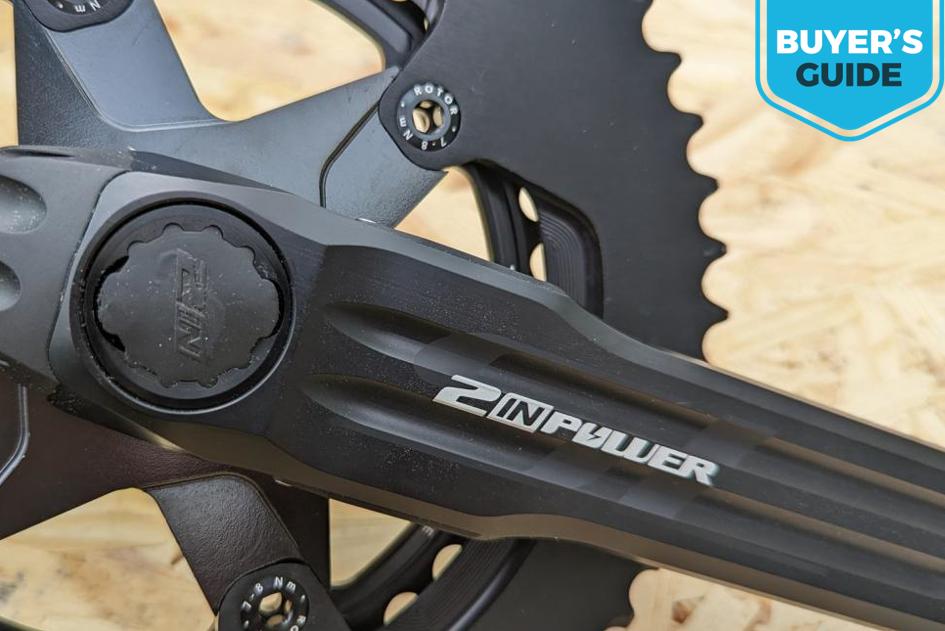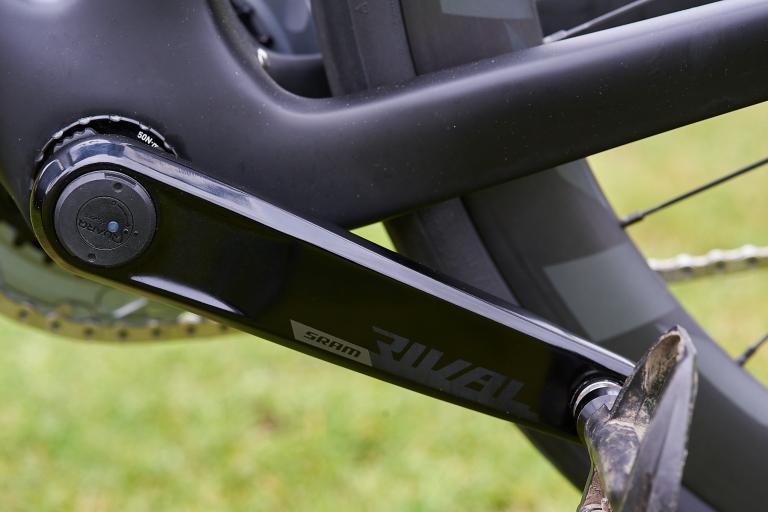Over the last few years, using a power meter to measure your training effort has become increasingly popular. Even some of the best power meters you can buy have become cheaper as new manufacturers have entered the fray, making them accessible to more people than ever before. With power meters available to suit a range of budgets, is it time to power up if you're still riding without?

Lightweight and reliable: Rotor 2INPower SL

Impressive for the money: SRAM Rival AXS Power Meter

Can switch between road and off-road: Garmin Rally RK200 Dual-sensing Power Meter pedals

Hard to fault in operation: Giant Power Pro Ultegra R8000 Power Meter

A sensible amount of money for power: 4iiii Precision 3 Power Meter Shimano 105 R7000

Accurate and very well built: Power2Max NGeco power meter

Very easy to use: Favero Assioma Duo power meter pedals

The original power meter: SRM Origin Power Meter
A power meter is a tool that can be used to help you become a stronger and fitter rider. When combined with a heart rate monitor, you can truly gauge how hard you're working using two very informative metrics.
Your power, expressed in watts or watts per kilogram (w/kg) of your bodyweight, provides you with extra data, that if used correctly can be beneficial for you in many ways.
> How to get the most from your limited training time
The most widely-used type of power meter uses electronic strain gauges to measure how much force you're putting into the bike, and from that will calculate your power. They are typically integrated into components such as cranksets, pedals or chainrings.
Previously, power-measuring rear hubs were a common method to obtain power data, but cranks and pedals are now the components most often used to house a power meter.
Previously, you would have needed a cycling computer to record data from your power meter as almost all power meters use ANT+ for communication - but some of the best smartwatches are also now capable of connecting to power meters via ANT+.
Some power meters also use Bluetooth which you'll need if you want to use, say, Strava on a phone to record your data.
Most power meters cost in the hundreds of pounds, which is a pretty significant purchase, but they can help you make the best use of training time and can be a satisfying way of gauging progress and maintaining your drive to achieve PBs, or just get faster and fitter.
Hopefully there is something for everyone in our picks below, and you'll also find some extra handy buying advice under our selections too...

















Add new comment
6 comments
Me own power meter is built in to the ole body and tells me the important metric of, "Any left or not". Also, "Ease orf or die". (AKA a counter to the exhortation, "Bury yersel").
Some objective metrics are best left unknown. Knowing them can undermine the production of more, despite what avid data-collectors might wish. Vaulting ambitions laid low by a gizmo-sneer.
Please check gplama. Ultegra dual sided setup, Garmin pedals, rotor 2in power all have glitches and can't be considered as reliable at all.
I would only consider power2max in this setup as it simply works and is reliable. I have 9y old setups and they read still consistent. Btw combine the power2max ng with rotor aldhu crank and it weighs less then your srm and dura ace crank without power meter. 50gr lighter if you care. Pedals are swappable ? Well not so easy as setup is very critical to correct and consistent reading
You get that it doesnt actually matter in the real world right? Drop outs are no big deal and neither is under or over compared to another meter as long as they are consistent.
I think you are taking this too seriously.....
For clarity, inaccurate data is an issue if you want to use a power meter. That is, something that is inaccurate is unlikely to be repeatable and consistent in it's data. Plus, if you then move to another power meter (either the same brand or different) it's entirely pausible that the new meter will read differently to the old one, and assessing differences will confound the data making it unreliable and useless.
On the other hand i've chosen power meters that are consistent, reliable and accurate. Additionally, i also perform static testing with known certified masses to ensure that factory calibrations are correct (or not). This has allowed me to have a consistent data set since i started recording power data in 1994 - knowing that the data from one meter to another is the same (or extremely close). For example I currently use an FSA Power Box and this is within 1 W at a range of power outputs of my Tacx Neo and that's the same as my SRM and Infocrank. The FSA, (the last) SRM (I owned) and the Infocrank were all correctly calibrated from the factory. I've had other accurate meters as well (Power Tap hub, Quarq, P2M - which is essentially what the FSA is, maybe others trying to recall).
P2M is the system I have been looking at to replace the 4iiii left sided PM I currently run. I was only really concerned about the weight. I've looked at Rotor many times but their lists of different setups and BB compatability is a minefield. I don't think I have heard of anyone complain about Power2Max ever.
My first power meter was a P2M. That was fitted about 9-10 years ago. The bike it was fitted to was used for another 2 years before being replaced for general use but has been fitted to my turbo setup ever since (and for some winter riding) and the meter still works perfectly. Really impressed with its reliability.